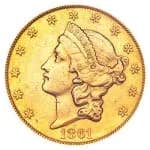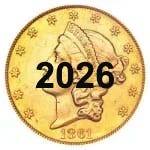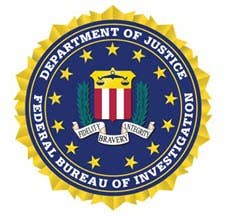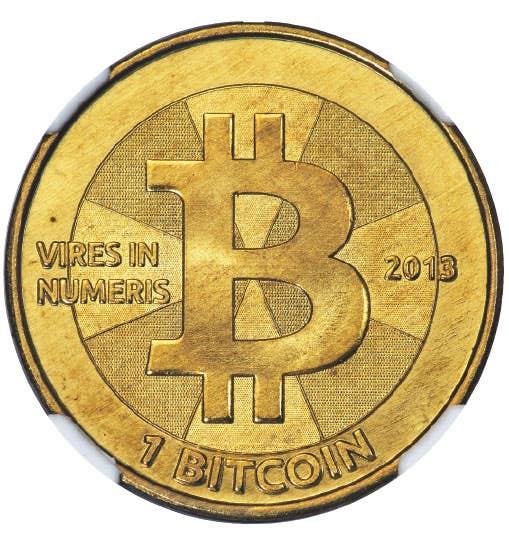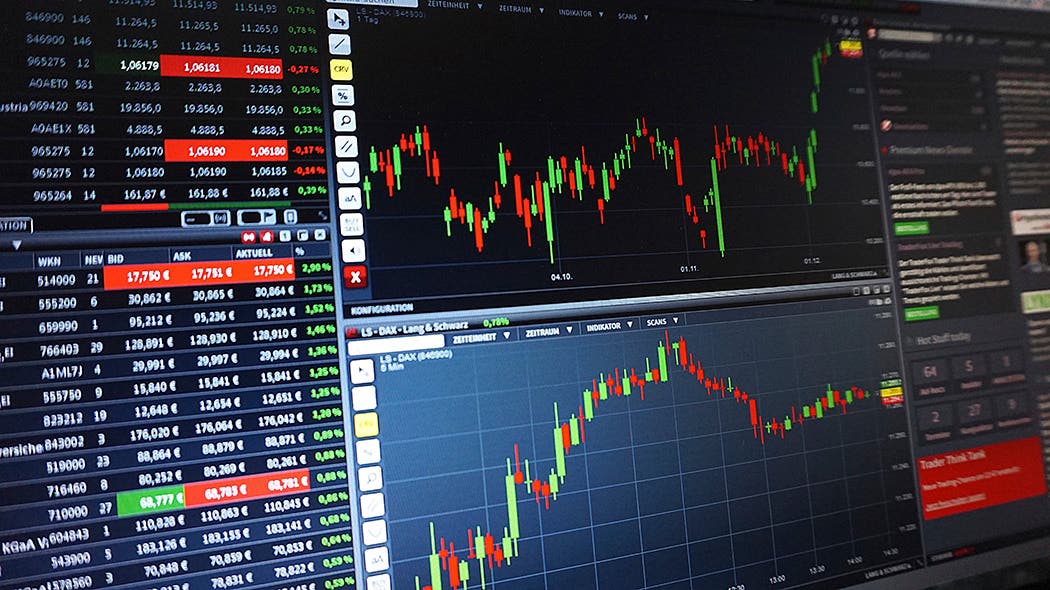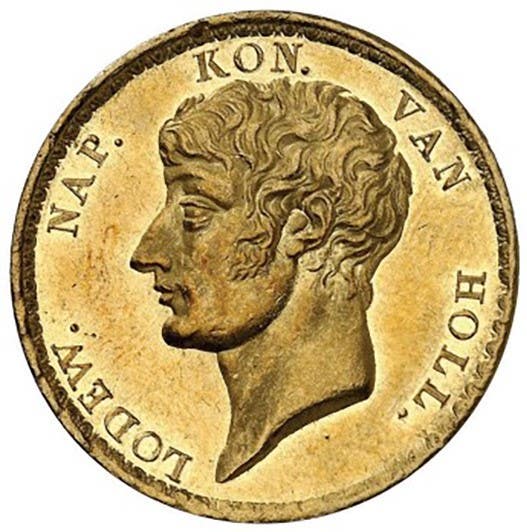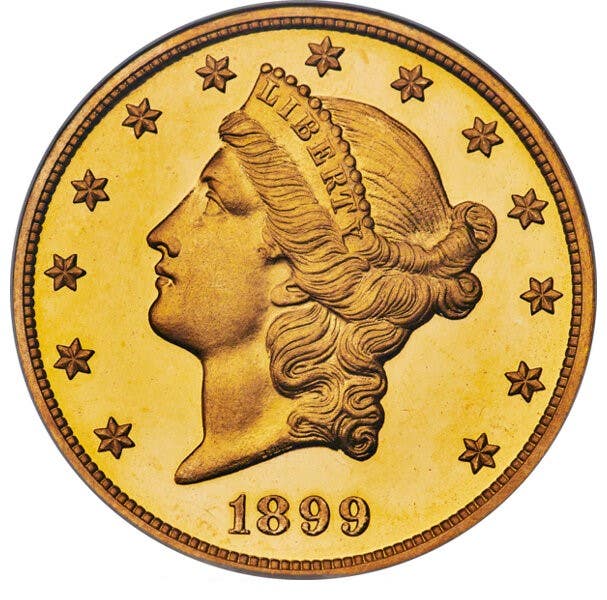Presidential dollars follow dollar failures
It seems so easy. Based on the 50 state quarter program it may be easy, but before anyone starts thinking great thoughts about the future of the program for dollars honoring the former Presidents of the United States, a little bit of history might well be in order.
It seems so easy. Based on the 50 state quarter program it may be easy, but before anyone starts thinking great thoughts about the future of the program for dollars honoring the former Presidents of the United States, a little bit of history might well be in order.
Certainly there is no dispute that the 10-year program featuring every state on the reverse of a quarter has been an enormous success. Some might have doubted the program at the start. Ironically, it flew in the face of past Mint objections to new designs as potentially ?confusing,? but the fact remains that the historic objections were without any serious basis in fact and the program proved to be popular in ways even some of its biggest proponents probably found surprising. Simply based on the success of the quarter program, it was likely if not certain that some other variations on the idea would be tried as everyone is happy, especially the Mint, which ends up seeing revenues increase dramatically.
There are, however, some considerations that must at least be recognized before anyone starts counting revenue before it is realized. The first is simply that former Presidents being depicted on something is not precisely a new idea. I can remember books of stickers with small biographies of the former Presidents when growing up in the 1950s. There were also gold-colored plastic medals issued as premiums by the local milk company. Over the years, just about anything people could collect has featured some collection of the former Presidents. That said, they all have never been on coins. We have had Washington, Lincoln, Jefferson and others, but you needn?t bother to look for John Tyler or William Henry Harrison or Warren G. Harding.
Just because it?s been done repeatedly does not mean coins featuring the former Presidents are a bad idea. Rather, it is simply a suggestion that perhaps the idea may not receive quite the same reception as did the state quarters. Moreover, in the case of states, everyone had at least one quarter that was special as the quarter from the state where they live. People may not feel quite the same attachment to former Presidents. Also consider that some former Presidents who are still living will likely not have a coin, yet they are the Presidents many potential collectors will have met, giving them a special tie to that one President not unlike the fact that having their state on a coin gives them a special interest in at least one of the quarters.
Even with the possibility that former Presidents may not prove to be quite as popular as current politicians would like to believe, the fact is that riding on the coattails of the success of the state quarters it is likely that many will jump on the bandwagon and heavily promote the new dollars offering booklets and information on all the former Presidents. Giving the nation a little refresher course in the history of past Presidents certainly cannot be a bad thing.
If there is one thing which raises potential concern about the success of the program it would probably be the idea of using $1 coins. As a special collection there is certainly nothing wrong with dollars. In fact, collectors love some dollars as evidenced by the popularity of Morgan silver dollar collecting today. As circulating coins, however, dollars are another matter. One of the great strengths of the state quarter program is that with so many quarters in use every day, the program received invaluable free promotion simply because in using quarters every day every American had to notice and a surprisingly large percentage of them became interested in forming a collection.
Even under the best of circumstances it has to be said that the history of dollar use is a very different matter. You can basically start at any point in U.S. history and find reason to believe that, when it comes to dollar coins, the reaction of the American public may well be very different than would be expected by a change in the quarter.
Flowing Hair dollars are pretty scarce today, but that is because the coin was hardly produced. Spanish-milled dollars ruled the roost. It is pretty hard to argue that the first Bust dollars were not popular. Their problem was that they were perhaps popular for all the wrong reasons. Some found they could be exported. To others, bringing silver into the early Mint, the silver dollar as the top silver denomination was the easiest denomination to receive in exchange. The problem at the time was that the Mint was trying to deal with a national coin shortage and making dollars that were serving as a trade coin in some cases was not helping solve the circulating coin problem.
The fact that the dollar had very little role in the commerce of the day can be seen in the lack of reaction to the suspension of their production in 1804. There were no protests in the street or any other demonstration. A few bringing in silver might have expressed disappointment that they could not get silver dollars, but the bulk of the American public went about their business with no concern over the lack of silver dollars.
It would be very hard to make a good case that the Seated Liberty dollar of 1840 had a better acceptance in terms of use in commerce. In fact, there is very little evidence that the Seated Liberty dollar was ever used in any numbers in commerce. In fact, it has been suggested that the prime use of the Seated Liberty dollar in its early years was as reserves or as novelty gifts for birthdays and holidays.
In the 1850s, with the introduction of the gold dollar, the mintage differences were striking. Gold dollars in many years had mintages in excess of 1 million pieces while the Seated Liberty silver dollar rarely even reached 100,000. Nor did it change with the passage of the time as a use was found for Seated Liberty dollars and that use was to be shipped to China and other places, but not to circulate in the United States.
The exportation of Seated Liberty dollars actually opened eyes to a possibility of using larger amounts of silver and shipping that silver out of the country through a Trade dollar. It was actually a very good idea as the Comstock Lode by its sheer quantity of silver had created a situation where the price of silver was likely to decline if some new use of silver was not found.
With Western merchants and bankers wanting to do increased business with China where large silver coins were demanded, the idea of making a Trade dollar that was slightly larger than a regular dollar for use in the China trade seemed to be a classic case of killing two birds with one stone. It was basically the first time expectations for a dollar coin of the United States got out of hand. The Trade dollar introduced in 1873 proved to not be the answer. Chinese merchants preferred the Mexican coin.
The problem with the Trade dollar was in part that the expectations for its use in China were not realistic.
What made the situation far worse was that the Congress decided to revoke its legal-tender status in 1876 and that meant the Trade dollar despite saying DOLLAR was really only 420 grains of .900 fine silver. The price of that silver started dropping and by the time the first Morgan dollars appeared, you had a situation where a Morgan dollar containing 412.5 grains of silver was honored as one dollar while a Trade dollar containing 420 grains of silver was 90 cents and falling in value.
It was a public relations disaster for the government and a financial one for those who accepted Trade dollars as being worth a dollar. Even though the government was forced to later redeem them for $1 each in the 1880s, the damage had been done. As collateral damage, it also meant that the Morgan dollar could never reach the lofty goals its proponents had for the Morgan.
The idea behind the Bland-Allison Act that required massive silver purchases for the purpose of making silver dollars was simple. It was to make the government a prime consumer of silver to prop up its price. Whether the silver dollars circulated or not was not really the issue. Buying the silver and making the dollars was the issue, but while successful to a degree, the lack of nationwide use of Morgans eventually doomed the idea.
After the Trade dollar fiasco, many people were perfectly happy with bank notes. That preference continues to this day. Although some 50 million Morgans reached circulation by early 1900, there were over 500 million sitting in vaults costing money to store. The Morgan was playing a role, but a passive one as backing for the paper Silver Certificates most of the nation was using instead of silver dollars.
It was that role as backing for Silver Certificates that saw silver dollar production resume in 1921 after being suspended after 1904. This was because some 270 million silver dollars were melted to help India in 1918 under terms of the Pittman Act as part of the U.S. effort to fight World War I against Germany, Austria and the Ottoman Empire (as Turkey was then part). The Silver Certificates that were backed by these melted dollar coins had to be retired. That was a great inconvenience. Replacement of the melted dollars became a top priority. At least this time the Morgans and Peace dollars had a practical use as backing for Silver Certificates. Peace dollars were coined heavily 1921-1928, when the melted supply had been fully replaced. The coins? role in circulation was limited. People preferred paper.
Anyway, anyone thinking big things will happen with the new Presidential dollars would be well advised to at least consider the track record of recent $1 coins and the expectations that were not realized. A little dose of cold water now on expectations might prevent a great deal of bad feeling later if the Presidential dollars follow the most recent dollars in terms of acceptance and use.
With the final end of the Peace dollar series in 1935, no further dollar coins were produced until 1964 when the Peace dollar design looked to be revived. This idea was scotched before it was launched.
The honor of the first dollar coin since 1935 went to the coin honoring President Dwight David Eisenhower.
The 1971 release of the first Eisenhower dollar was filling a need that did not exist. It was something to mark the passing of the former general and President. No one felt the need to do something more than Richard Nixon, who had served as Vice President under Eisenhower. With the last two Presidents being depicted on coins being Roosevelt and Kennedy, who were both Democrats Nixon might very well have felt that a little political balance was needed and his former boss was the perfect way to achieve that balance.
Realistically, the United States has been very good about avoiding the political use of our coins. We can probably thank George Washington and the early Congress for establishing an approach to coins that very much tried to keep their potential political use from taking place and even though there are periodic ideas which might smack of politics, coin designs have been basically above politics.
While some political motive might be seen in the Eisenhower dollar, the fact is that objectively examined, the record of Eisenhower was one that certainly deserved special recognition. It was not the Eisenhower design that caused the problem with the Eisenhower dollar, it was simply that he was placed on a dollar coin that was neither needed or desired.
In their desire to honor Eisenhower, Congress simply brought the dollar coin back, but this time as a copper-nickel clad piece. It was a logical step. There were no other coins available. Lincoln, Jefferson, Roosevelt, Washington and Kennedy were secure on their respective denominations.
The problem with the coin was with the expectations for it. Stretching all the way back to the Morgan dollar first struck in 1878, Americans have not used dollar coins in the numbers desired because they are perfectly content with $1 bank notes.
The Eisenhower dollar ran into the very same preference. In the first two years, enough Eisenhower dollars were produced to cause a backlog and that meant that in its third year, the only Eisenhower dollars would be for mint sets as none was needed for circulation.
When mintage resumed for circulation in 1974, they were at much lower and more realistic totals. Although there was some use of the Eisenhower dollar, it was never in the numbers desired.
The fixers turned up. That lack of use of the Ike dollar seemed to bother officials. A group called the Research Triangle Institute issued a study on the matter in the 1970s which seemed to give many hope that the problem was not the competition with the $1 Federal Reserve Note, but rather simply with the size of the coin. It was too big and bulky. Any $1 coin is going to seem big and bulky compared to paper money. That didn?t matter. Size was seized upon as the problem to be fixed.
Conventional wisdom today is that no dollar coin can succeed as long as the same denomination is available in paper form. This is grounded in the experiences of other countries. The United Kingdom and Canada, especially, retired notes to make the coins succeed.
The Research Triangle Institute did not call for the elimination of the $1 Federal Reserve Note, but it did call for the elimination of the cent and half dollar. Eliminating the half dollar was critical as to have a new smaller dollar without eliminating the half dollar would mean the dollar was somewhere in size between a quarter and half dollar. There is very little room to make a dollar clearly different in size from both the quarter and half dollar. In reality, there is not enough room and that was learned when the so-called ?Dollar of the Future,? the Susan B. Anthony dollar, the ?mini-dollar,? was released in 1979.
Ironically, the high expectations of officials at the time for the new dollars seemed all the more ridiculous in light of how quickly the Anthony dollar was rejected by the public. People kept confusing it with the quarter. As a result, they treated it like a ticking bomb, getting rid of any Anthony dollar as quickly as they were received.
In precisely the same amount of time as the Eisenhower dollar, the Anthony dollar was backlogged resulting in a third year production of only coins for special collector sets, exactly as had happened with the Eisenhower dollar eight years earlier.
In reality, the Anthony dollar did find some commercial use with mass transit authorities and vending machines, but not the widespread use everyone had predicted. In the end, the stockpile was exhausted, forcing a special but small emergency mintage in 1999 to meet the commercial needs prior to the release of the new Sacagawea dollar in 2000.
The fixers this time decided it was the color that needed attention. It would be nice to say that the Sacagawea dollar was a success where the others were not, but history repeated itself for the third consecutive time. After an initially large mintage, probably in part assuming the gold color of the Sacagawea would make a difference, by the third year just like the Eisenhower and Anthony dollar before it, the Sacagawea dollar was being produced only for special sets. No one is quite sure where the more than 1.3 billion Sacagawea dollars actually went, but at the same time officials were quietly minting only examples needed for collectors, just as in the past.
In fairness, as in the past, the Sacagawea had some commercial uses, but once again, with the $1 Federal Reserve Note still in use, its widespread use was probably limited. That might well be cut short by the new Presidential dollar coins. Then again, Sacagaweas must continue to be minted in numbers large enough to equal one-third of the total Presidential dollars struck. So even as the Pres idential series has arrived, the Sacagawea dollar has not departed into numismatic history.
The question becomes this: will the new Presidential dollars be doomed to problems in their third year as well? It is not a certain problem, but it is also worth noting that starting in the third year even the 50-state quarter mintages began to decline. It is perhaps simply natural that officials will estimate a higher demand than will actually exist. Shortages are more politically damaging to officials than surplus, so anybody worth his salt will opt for surplus.
Of course, if a coin has been trumpeted as was the Anthony dollar, that third year reality can come as a crushing blow to those promoting the program.
In this case of the Presidential dollars, it depends on the definition of success. Why promise that it will be used in circulation at all? Yes, the law requires that an attempt be made to promote them in circulation, but how do you define the word ?promote?? Who wants to be stuck with a loser?
The Presidential dollars will make money for the government. Collectors make that a slam dunk sort of promise, but like the other programs of the past, Presidential dollars are likely to decline around the third year and that possibility is even increased as the coins of the third year in terms of Presidential dollars are much lesser known figures than Washington and Jefferson who start out the program.
It is not the end of the world. The Presidential coins should be a good collection, one that will have a lot of support. That said, being realistic is important, as dollar coins whether they depict former Presidents or anything else, are only going to have a limited role in circulation as long as the $1 Federal Reserve Note is produced. In the minds and pockets of most Americans, the paper form is the dollar of the United States they want to use. No dollar coin is likely to change that situation, even one that will feature four portraits a year.

